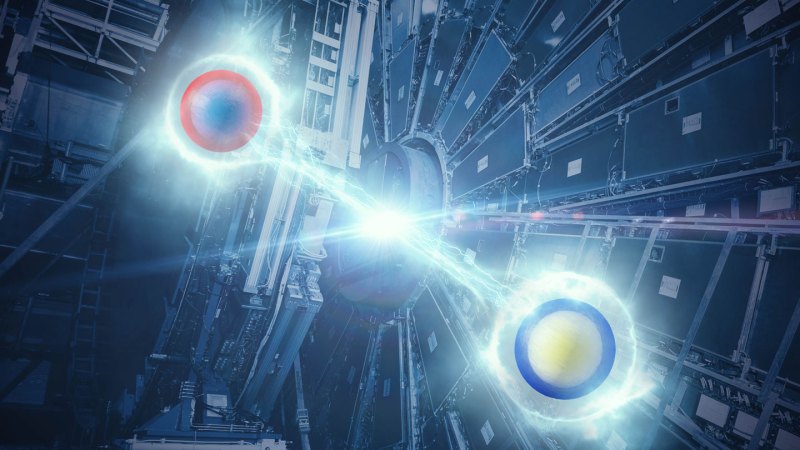
Quantum entanglement has made its way to the top.
Scientists have measured the strange quantum phenomenon of entanglement in top quarks, the heaviest fundamental subatomic particles known. It is the first detection of entanglement between pairs of quarks – a class of subatomic particles that make up larger particles, including protons and neutrons.
Particles that are entangled have properties that are linked or correlated with each other, causing the two to behave as a unit even when separated by large distances (SN: 15.6.17). Entanglement is usually studied in relatively small laboratory experiments using light particles or photons. In contrast, the new measurement required the world’s most powerful particle accelerator, the Large Hadron Collider at CERN, near Geneva. It is the highest energy detection of entanglement ever.
Using data from proton collisions, scientists with the ATLAS experiment, a particle detector at the Large Hadron Collider, studied the collisions that formed a top quark and its antimatter counterpart, a top antiquark. The two particles become entangled through their spin, a quantum property similar to spin motion. This means that the spins of the two particles are coupled, so measuring one spin will immediately tell you the other.
To detect the entanglement, scientists observed the particles into which the top quark and antiquark decayed. The angles at which those particles were emitted revealed the entanglement, researchers from the ATLAS collaboration report Sept. 18 in Nature. (CMS, another experiment at the Large Hadron Collider, also found evidence of top quark entanglement this year, in a study that has yet to be peer-reviewed.)
As quarks go, top quarks are special. In general, quarks don’t like to be alone, so when they break apart in high-speed collisions, pairs of quarks and antiquarks quickly materialize, morphing together into larger particles. This process, known as hadronization, removes any entanglement. But top quarks and antiquarks decay so fast that hadronization cannot occur, so the particles they decay into can carry the signature of their entanglement.
That is, for the demonstration of entanglement, the top quarks have the upper hand.
#Large #Hadron #Collider #exposes #quark #quantum #entanglement
Image Source : www.sciencenews.org